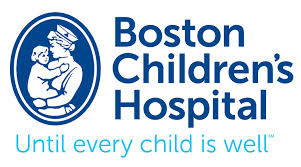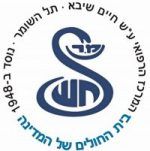预约演示
更新于:2025-05-07
Respiratory Aspiration of Gastric Contents
胃内容物呼吸道误吸
更新于:2025-05-07
基本信息
别名 Aspiration of gastric contents、Aspiration of vomitus、Aspiration, gastric contents + [15] |
简介 Inhaling refluxed gastric or duodenal contents. |
关联
1
项与 胃内容物呼吸道误吸 相关的药物靶点 |
作用机制 脂质抑制剂 |
在研机构- |
在研适应症- |
最高研发阶段终止 |
首次获批国家/地区- |
首次获批日期1800-01-20 |
83
项与 胃内容物呼吸道误吸 相关的临床试验NCT04190524
Sonographic Assessment of Cricoid Pressure
Examining the effectiveness of cricoid pressure using ultrasound imaging. Pulmonary aspiration of gastric contents during tracheal intubation, although rare in pediatrics, is a potentially catastrophic complication of anesthesia. Cricoid pressure is applied during rapid sequence induction to occlude the esophagus and prevent aspiration of gastric contents. Accumulating evidence in adults suggests that cricoid pressure often is not effective, either because the esophagus normally lies lateral to the cricoid cartilage, or because downward pressure on the cricoid cartilage laterally displaces (rather than compresses) the esophagus. The investigator proposes to examine the effectiveness of cricoid pressure in children in the peri-operative setting using non-invasive ultrasound imaging. Using this approach, the investigator will investigate the normal anatomical relationship of the esophagus and the cricoid cartilage, as well as how cricoid pressures influences this relationship. Further, the investigator will examine whether alternatives to downward cricoid pressure, such as laterally directed pressure, are more effective at occluding the esophagus.
开始日期2025-09-01 |
NCT06839248
Effect of Fasting Recommendations on Residual Gastric Contents Among Patients Using Glucagon-like Peptide-1 Receptor Agonists: A Randomised Controlled Trial
The aim of this randomised controlled trial is to determine the effect of a 24-hour liquid diet compared to standard fasting guidelines on the proportion of participants who present with increased residual gastric contents during their study visit. It also aim to determine the effect of a 24-hour liquid diet compared to standard fasting guidelines on:
* Solid content, defined as a grade 3 antrum.
* Patient-reported outcome measures (PROMs), including thirst, hunger, nausea, fatigue, and anxiety.
* Compliance measures, including adherence with the intervention, time since last oral intake of solid foods, and time since last oral intake of clear liquids.
We will enrol adults who are currently using any once-weekly glucagon-like peptide-1 receptor agonist (GLP-1RA) medication. Participants will be allocated in a 1:1 ratio to follow a 24-hour clear liquid diet or standard fasting guidelines prior to attending a study visit where participants will undergo a blinded gastric ultrasound assessment.
* Solid content, defined as a grade 3 antrum.
* Patient-reported outcome measures (PROMs), including thirst, hunger, nausea, fatigue, and anxiety.
* Compliance measures, including adherence with the intervention, time since last oral intake of solid foods, and time since last oral intake of clear liquids.
We will enrol adults who are currently using any once-weekly glucagon-like peptide-1 receptor agonist (GLP-1RA) medication. Participants will be allocated in a 1:1 ratio to follow a 24-hour clear liquid diet or standard fasting guidelines prior to attending a study visit where participants will undergo a blinded gastric ultrasound assessment.
开始日期2025-05-12 |
NCT06803225
ULTRASOUND ASSESSMENT of GASTRIC CONTENT in FASTED PREGNANT WOMEN: PROSPECTIVE OBSERVATIONAL STUDY
The risk of pulmonary aspiration of gastric contents remains a significant risk during anesthesia, especially in pregnant women, as they may often require surgery without having observed appropriate fasting. A bedside ultrasound assessment of the status of the gastric content would be of great value for the clinician.
This prospective observational study aimed to (1) qualitatively and quantitatively describe the sonographic appearance of the gastric antrum in fasted high-risk pregnant women during the third trimester and (2) evaluate the relationship between demographic and clinical variables and the gastric antral cross-sectional area (CSA).
This prospective observational study aimed to (1) qualitatively and quantitatively describe the sonographic appearance of the gastric antrum in fasted high-risk pregnant women during the third trimester and (2) evaluate the relationship between demographic and clinical variables and the gastric antral cross-sectional area (CSA).
开始日期2025-03-01 |
申办/合作机构 |
100 项与 胃内容物呼吸道误吸 相关的临床结果
登录后查看更多信息
100 项与 胃内容物呼吸道误吸 相关的转化医学
登录后查看更多信息
0 项与 胃内容物呼吸道误吸 相关的专利(医药)
登录后查看更多信息
318
项与 胃内容物呼吸道误吸 相关的文献(医药)2025-03-01·Med
Theranostic methodology for ex vivo donor lung rehabilitation
Article
作者: Snoeck, Hans-Willem ; Cunningham, Katherine M ; Van Hassel, Julie ; Krishnan, Aravind ; Pinezich, Meghan R ; Kim, Jinho ; Vunjak-Novakovic, Gordana ; Fawad, Moeed ; Hozain, Ahmed E ; Chen, Ya-Wen ; Bacchetta, Matthew ; O'Neill, John D ; Vila, Olaia F ; Wobma, Holly M ; Guenthart, Brandon A ; Ma, Stephen P
2024-12-01·Seminars in Respiratory and Critical Care Medicine
Epidemiology and Pathogenesis of Aspiration Pneumonia
Review
作者: Boixeda, Ramon ; Torres, Antoni ; Almirall, Jordi ; de la Torre, Mari C.
2024-11-01·Clinical Toxicology
The trajectory of serum salicylate concentrations after ingestion of medicinal oil containing methyl salicylate
Article
作者: Lam, Rex Pui Kin ; Chan, Esther W. Y. ; Chow, Anthony T. Y. ; Tse, Man Li ; Chan, Chi Keung ; Rainer, Timothy Hudson
分析
对领域进行一次全面的分析。
登录
或

生物医药百科问答
全新生物医药AI Agent 覆盖科研全链路,让突破性发现快人一步
立即开始免费试用!
智慧芽新药情报库是智慧芽专为生命科学人士构建的基于AI的创新药情报平台,助您全方位提升您的研发与决策效率。
立即开始数据试用!
智慧芽新药库数据也通过智慧芽数据服务平台,以API或者数据包形式对外开放,助您更加充分利用智慧芽新药情报信息。
生物序列数据库
生物药研发创新
免费使用
化学结构数据库
小分子化药研发创新
免费使用



